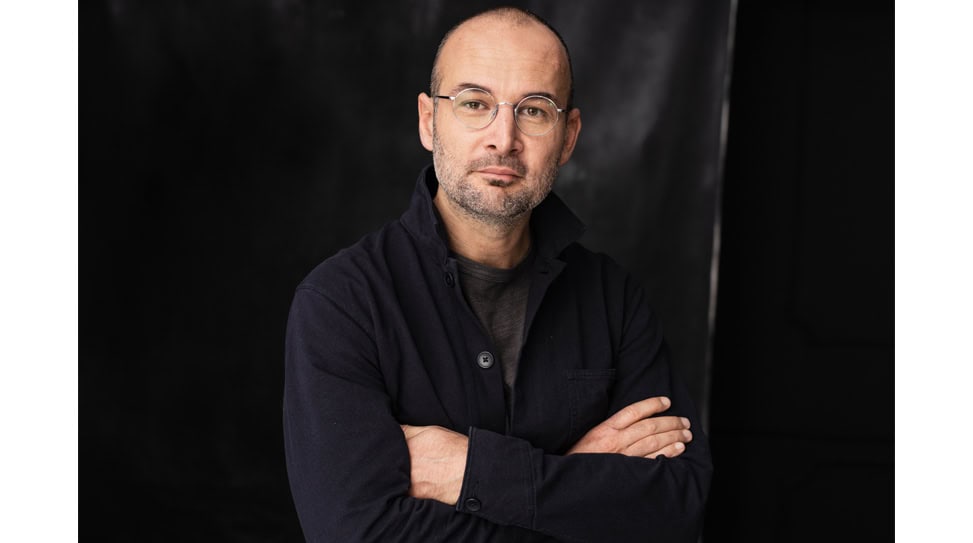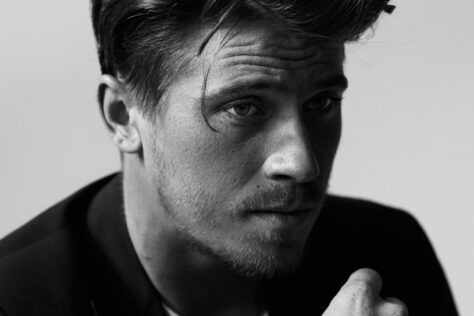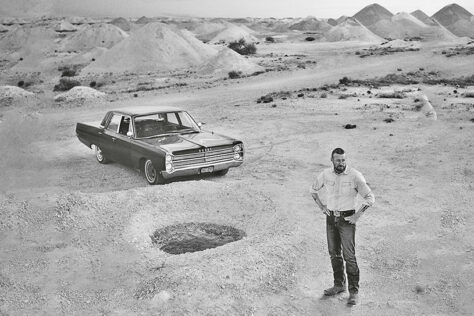I think the most important thing is that [Collective] serves as a memory of the point of no return in Romanian society.
On October 30, 2015, a fire engulfed Bucharest’s underground Colectiv nightclub, claiming the lives of 27 concertgoers while injuring 180 others. In the ensuing months, 37 more burn victims perished at local hospitals—not from life-threatening injuries from the tragic incident but succumbing to entirely preventable bacterial infections while under their care. Government officials were quick to deliver Orwellian newspeak, falsely reassuring the public that the victims were well taken care of and there was no reason to transfer patients to state-of-the-art burn trauma centers outside its borders. It was a reprehensible lie concocted to make the scandal go away, going up and down the chain of command. Outraged, citizens took to the streets. A new technocrat government was installed and given a year to steady the ship before new elections. Observational filmmaker Alexander Nanau began filming during the early days of this scandal. Collective tracks the thorny proceedings from the ground-up as the story grows bigger and more unwieldy.
Much of Collective’s first half follows a team of reporters at Bucharest’s daily newspaper, the Sports Gazette. They publish an article, which sends shockwaves through Romania. The team revealed what the government wanted to keep quiet: not only were its hospitals ill-equipped to handle burn victims—the disinfectant used in their medical facilities nationwide was being diluted to the point of losing all effectiveness at killing bacteria. Dogged editor-in-chief Catalin Tolontan is the driving force behind the investigation, snooping around with no-nonsense colleagues like Mirela Neag, to track down the CEO of Hexi Pharma, the disinfectant manufacturer. Meanwhile, they’re gathering testimony from whistleblowers inside the hospitals, from doctors to accounting clerks. We’re then introduced to Vlad Voiculescu, an idealistic young politician who takes over as the minister of health during the fallout. Although it’s clear he wants to do right by the victims, he, too, soon finds himself mired in a web of bureaucracy and unable to act on the unchecked abuse, bribery, and embezzlement that rules the healthcare system.
Set across over a year of alarming investigations and political grandstanding, Nanau is there in the halls of power, patiently and methodically digging deeper through the morass of corruption and lies. With his extraordinary access to confidential meetings, private interviews and other sensitive developments, the filmmaker keeps a watchful eye through the lens of his camera on his cast of subjects, pulling an errant thread until, suddenly, the whole thing is coming apart.
Anthem reached out to the filmmaker in Bucharest to discuss the best documentary of 2020.
Collective is up for the International Feature and Documentary prizes at the 93rd Academy Awards.
Collective is eye-opening, to say the least. It’s moving, a profound journalistic inquiry, stranger than fiction, universal storytelling, and also, really thrilling with a lot of entertainment value. When did you first realize that all of these elements were coalescing into the kind of documentary you wanted to make? Conceivably, the beauty and the curse in what you do must be that you don’t know where the journey will take you at the start.
Yeah, exactly. You don’t know when you start. You just hope that you have chosen the right characters to follow. It becomes an exploration of human beings, of human behavior, and then it’s just a gut feeling that things will happen. But you don’t know what will happen. Although when I started I wanted to make a film about power and understanding power—most of it corrupt and incompetent power, and how it crushes people’s lives—it was also for us a revelation to see how deep the length of humanity can go basically, and what a system in which corruption and incompetence is tolerated really does to human lives. But to answer your question, I think it was only when we were already shooting the minister of health [Vlad Voiculescu] that we understood it might come together, that one would have the chance to combine all the different elements: investigative journalism, politics, and human behavior.
Bringing yourself into the fold, establishing and then nurturing trust is obviously paramount. In turning the lens on the intimate fears and personal challenges of journalists in particular, did you feel an immediate kinship with your subjects like Catalin Tolontan and Mirela Neag? And how was that any different with a survivor like Tedy Ursuleanu or the health minister?
I think every relationship is very different. With the journalists, let’s say it’s a professional trust. I think they felt that I respected their professionalism and they respected mine. But we would never have a coffee or a beer. When I shoot with characters observationally, I choose to really consume all the relationships—the tension and everything between me and them because there is a lot of curiosity on both sides—and do it always through the lens of the camera. With the families and the victims, it was different because it was a different kind of emotion and identification that one builds up and needs to capture. I think what ends up in an observational documentary, and also in a fiction film, is basically the relationships and the stories that you have with people.
Do you think it was helpful for them to know that it was high stakes for you also? The threat was real to you, too. You were under surveillance by the Romanian government.
We knew that my phone was tapped. When I learned about it, let’s say that I saw it as a natural attempt of any government to get more information because we were filming on a daily basis next to the journalists that were investigating the government and power. I think that every state is doing that, even if no state is accepting that publicly. I think they’re listening to more phones than we like to believe. We were aware that they might understand the seriousness and the power of what we were doing two or three years later. But in the end, I figured they might not have understood anything. I don’t think they really understood why we would film things and not release them while we were filming. That said, we were a professional production so we were organized in a professional way. Every day, the footage was stored in multiple sources. We were hiding it in multiple places. Also, we were flying it out of the country and securing it with a company.
As a director, producer, DP, and writer working in observational filmmaking and going into these situations that might feel quite alien to you on any given day, how much can you realistically prepare? How do you prepare for something that you don’t know is coming?
What I always do is, once I start to understand the theme of what I’m following, I read anything I can on the theme, be it on journalism or systems—the medical system versus the flight system, for example, which you can find in a book called Black Box Thinking: The Surprising Truth About Success. It explains why the flight system is so safe when the medical system is not. The flight system wants everybody, every company, to always share the information of any black box of a plane that is crashing. That means the whole system worldwide can correct problems and failures. Then I watch films that were done on the same theme. I prepare with what is out there. I look at how these stories are reflected in the world and ask, “What am I to expect?” You just prepare as good as possible. Because it’s observational, what is very important and what you learn with experience is that there’s nothing that you can control. Although you can control the decisions to take—what to film, when to film—you have to be really open for anything. You shouldn’t have a preconceived idea about what the story should be or what should happen for you to capture a story.
I know you culled some 400 hours of footage in total. Inevitably, there are also the things you witness that you’re unable to capture for whatever reason. That comes with the territory—the lost moments—and that’s something you make peace with. Can you think of an example?
One of the limitations we had, for example, is that you can’t film in Romanian hospitals. They protect them the same as for the Pentagon. They know why they don’t let you in: they know they have a lot to hide inside. But then again, it’s hard to say because, in the end, when you finish a film, somehow your mind is seeing it as, “Okay, that’s the only film that you could have achieved here and it’s the right film.” So I don’t really remember things, no. I think we were very lucky to have people like the whistleblowers that were courageous enough to let us film. I really felt that, because of the energy that was in society after the fire, we wanted truth. We wanted to change things. I felt that I should push every limit and get access to what I needed in order to tell a story in which people can understand how things work. How does a whistleblower meet a journalist? How does power work from within? When I started out, I thought about wanting to make a film about power and how it works from within and understand it. How are human beings able to misuse their power, and be so corrupt and incompetent as to kill people? But I got used to the idea that this won’t be possible so we’ll have to tell a story through journalism that investigates power. Then suddenly, the doors opened and this opportunity came along for a minister to be appointed that was from outside the political sphere and really transparent.
It’s also interesting that you refer to your subjects as characters because it’s really true. Be it narrative fiction or documentary, what you’re doing is essentially the same: it’s a vetting process that’s very much casting. As a filmmaker, you’re considering really pivotal questions like, is this person compelling enough? How open are they? Did you consider many different candidates in the beginning?
Oh, there was a very elaborate process with our development team. Basically, we had our production mapped out with all the people involved in this thing, from all the victims to all the families to all the doctors, politicians, and journalists. We really tried to get an overview and understand. We also started to talk to many people and even do interviews just to see how they are on camera. It was basically, as you say, a casting process because there are more elements that you have to take into consideration. Is it a compelling character? Do the people have personalities that I’m so interested in? Do I think they’re so interesting that I will be able to spend over a year with them and still discover things? Are they people that are good on camera? “Good on camera” is maybe not the right term. It’s what you referred to as before: are they open? Because only if you sense that people will open up will they be compelling on camera. Then you’ll be able to have a relationship that, when it goes through a lens, really has something to say even for a viewer. So there are multitudes of decisions that you have to take in the beginning. I think the beginning is the most challenging time in observational filmmaking and then you just hope that you took the right decisions. It’s the same in fiction and theatre. If the casting is good, half the work is done.
Collective—a Holy Grail in my mind when it comes to movement filmmaking—really speaks to the medium’s power. An enormous emotional transaction is taking place. You sought out to spark change in the real world. Were you always drawn to this type of filmmaking even when you were in school? Is the artifice of fiction perhaps less attractive to you?
No, I definitely have an interest in exploring narrative also. I think that every story has its own, or needs its own, form and medium. Some stories are maybe better told through video installations in museums. I started in fiction filmmaking in film school and discovered observational documentary through classes basically. I think it was more a decision that had to do with age. I saw that, as somebody who was 23 in film school, it is more interesting to explore lives through such a film form than try to do a fiction film about a story that you know already and spend five to six years trying to finance. It was just the more appropriate medium for me in which to learn about life. But now I think I could do anything again. Theatre, fiction film…
Is there a future project that you have set in stone?
We’re developing different projects. It’s very hard to take a final decision on which one will go into production because we’re still in the middle of the [Collective] campaign, which is daily work since months ago. We’re developing fiction films as well as documentaries. I think what I find myself drawn to now are stories that cross borders basically and stories that show the influence of different people from different cultures and countries, and the influence they have on each other.
What is the climate in Romania like today, many years after the 2015 fire and following 2016, which you’ve previously cited as being a huge turning point for the nation, and after the dissemination of your film that has opened the eyes of so many on an international scale?
What really changed after the investigations and the revelations about the healthcare system is that the relationship of the people to the press has changed. They trust it a lot more and we have several incredibly good investigative platforms of young, strong journalists that expose corruption. People trust them and their investigations are really a threat to those in power. The civil society changed a lot and it is more powerful than ever. It is the civil society, for example, that’s building hospitals with private money. Even the band Metallica donated a quarter million euros to the first great, big hospital for cancer treatment for kids that was built by an NGO. It is the civil society and the NGOs that—even now during the pandemic—really bring protective equipment into hospitals and build functioning mobile COVID hospitals. Meanwhile, the state is just being corrupt again, spending money on equipment that is not up to the standards and building mobile hospitals that they close down because nobody can use them. They’re just built to spend the money. Since we launched the film, there was a breaking point. When we launched the film, the number of whistleblowers really exploded in the country. It is a widely seen film. It is a point of reference. I think the most important thing is that it serves as a memory of the point of no return in Romanian society, when people got aware and woke up to fight the corruption and incompetence that it tolerated for so long. And in the meantime, we have new parties made up of young people. Even Vlad Voiculescu became a part of one these parties two years ago. They have won enough votes to be a part of the coalition government. Since last Christmas, Vlad is back as a health minister.
Romania crossed the Rubicon. Now you’re headed to the Oscars. I think Collective has what it takes to go all the way. And I think we both know that more than winning any award, opening up more opportunities for people to see the movie is the most important thing, right?
Yeah, exactly.
I’m rooting for you.
Thank you very much. It was a pleasure.

 Clarion Call: Garrett Hedlund
Clarion Call: Garrett Hedlund A Conversation with Simon Baker
A Conversation with Simon Baker
No Comments